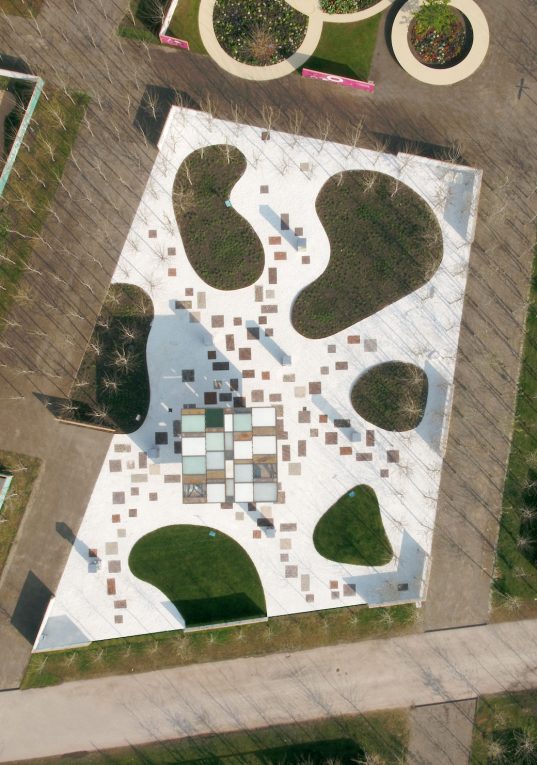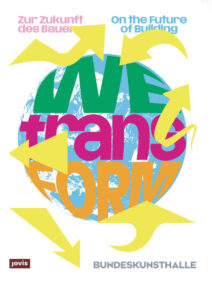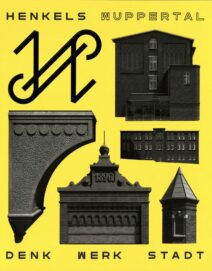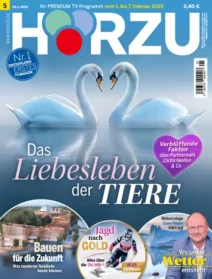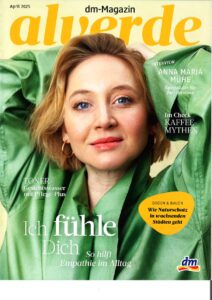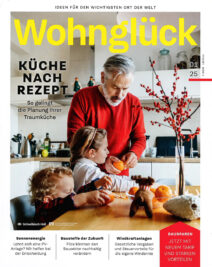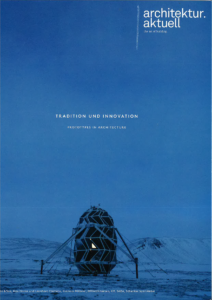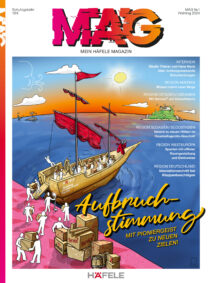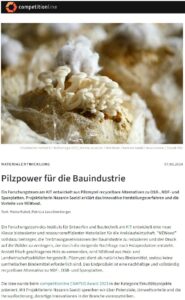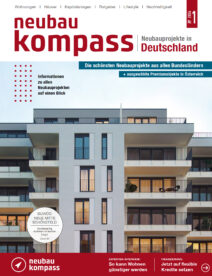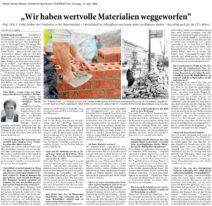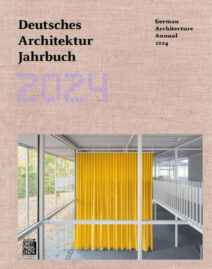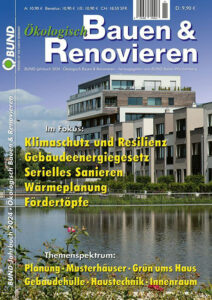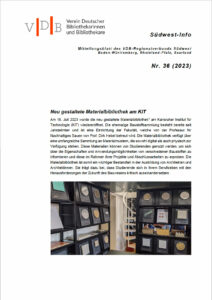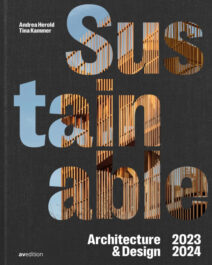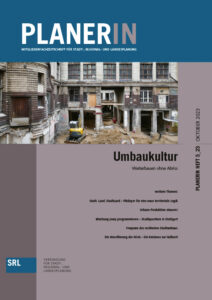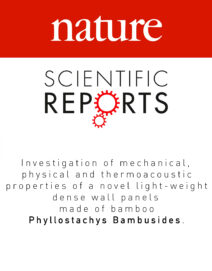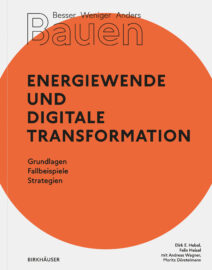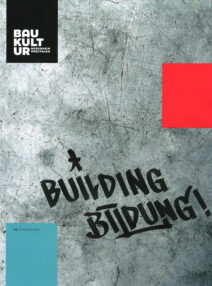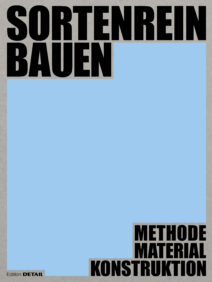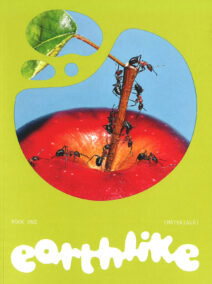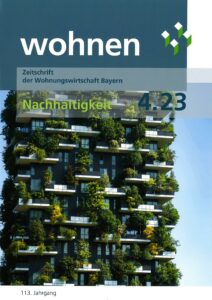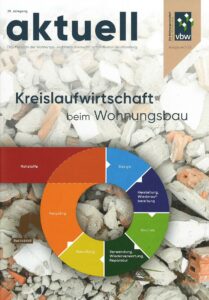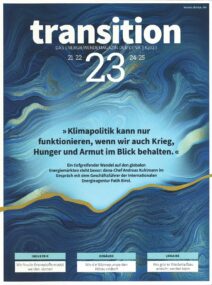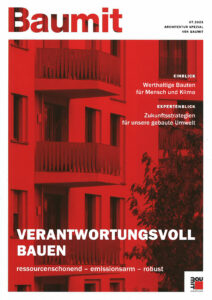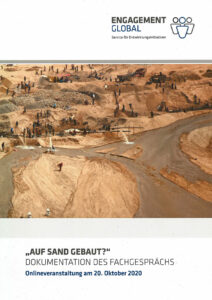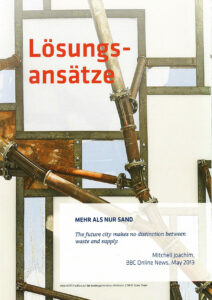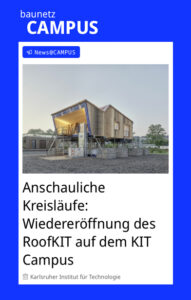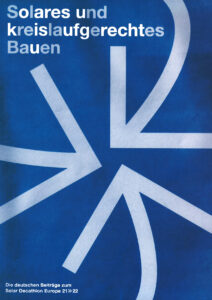Mehr.WERT.Pavillon
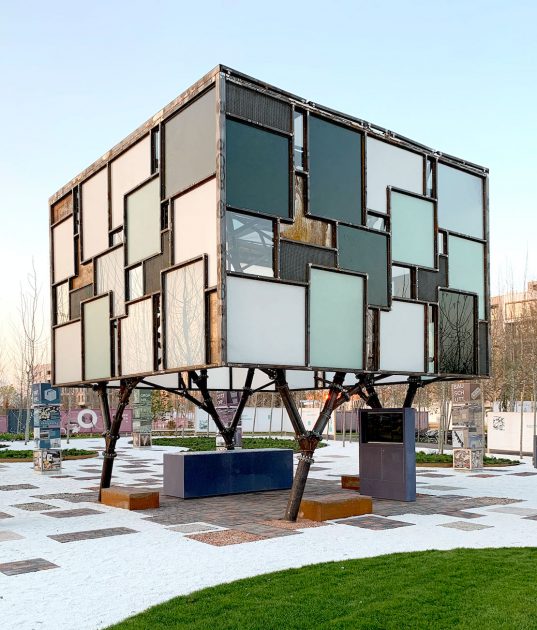
The 2019 German Federal Garden Show (BUGA) in Heilbronn is both garden and city exhibition. The newly built city quarter Neckarbodenis intends to be a test bed for a new urban area that exemplifies how people live well together in a densely populated urban setting. In this context, the relevance of the question of resources that will still be available and sustainably used in the future cannot be overestimated.
Situated on a central lot of the BUGA terrain, the Mehr.WERT.Garten (translation: Added.VALUE.Garden) and its pavilion address the question how we can perform a paradigm shift in the way we use our resources, from the currently dominant linear economy (take, make, throw) towards a circular economy of closed and pure material cycles. The Mehr.WERT.Pavilion is the shell, as well as main element of an exhibition on local and global resource use, alternative materials as well as their applications in a circular design and construction. On the one hand, the pavilion makes use of the existing urban mine – all materials used in the project have already undergone at least one life cycle, either in the same or in a different form. On the other hand, it acts as a material depot, which will become available again for future constructions at the end of the exhibition. As such, materials utilised in the construction of the Mehr.WERT.Pavillon are specified and employed in a way that allows their complete re-introduction into pure and type-sorted material cycles for reuse, recycling or bio-degradation after the decommissioning and deconstruction of the building. The pavilion’s objective is to proof that it is possible already today to design, detail and construct according to the principles of the circular economy.
The pavilions building materials are separated into four groups: (1) the load-bearing structure is largely made from reused steel originating from a disused coal-fired power plant in north-western Germany. It consists of four inclined supports that fan out like trees and are connected to each other by a rigid steel frame structure. (2) The façades and roof are clad in panels manufactured from recycled bottles glass and industrial glass waste. (3) The furniture is built from recycled HDPE plastic waste, while the chairs are 3D printed from plastic household waste. (4) The floor of the pavilion as well as the landscape design of the garden forms an assemblage of various reused and recycled materials and products made from mineral construction and demolition waste.
Mehr.WERT.Pavillon serves as a laboratory and test run for future construction projects as well as their building processes. The aim is to discuss important issues of construction and the associated use of resources with decision-makers from politics, construction planning and implementation and to develop new innovative concepts, applications and methods, both in practice and in teaching. The pavilion design originated in the design studio Building from Waste of the Professorship of Sustainable Construction at KIT Karlsruhe. It was further developed by KIT students Lisa Krämer, Simon Sommer, Philipp Staab, Sophie Welter, and Katna Wiese in collaboration with the Professorships Tragkonstruktionen (Prof. Matthias Pfeifer / Certification engineer) and Bautechnologie (Prof. Rosemarie Wagner / Structural form finding), as well as the office 2hs Architekten und Ingenieur PartGmbB.
Project credits
Client:
Entsorgungsbetriebe der Stadt Heilbronn
Ministerium für Umwelt, Klima und Energiewirtschaft Baden-Württemberg
Bundesgartenschau Heilbronn 2019 GmbH
Pavillon:
Design: Lisa Krämer, Simon Sommer, Philipp Staab, Sophie Welter, Katna Wiese, Professorship of Sustainable Construction, KIT Karlsruhe
Planning, structural design and execution: 2hs Architekten und Ingenieur PartGmbB Hebel Heisel Schlesier with Lisa Krämer and Simon Sommer
Structural form finding: Prof. Rosemarie Wagner, Fachgebiet Bautechnologie, KIT Karlsruhe
Certification engineer: Prof. Matthias Pfeifer, Karlsruhe, Germany
Object construction: AMF Theaterbauten GmbH
Electrical and lighting design: Udo Rehm / FC-Planung GmbH
Lightning protection: Gebr. A. & F. Hinderthür GmbH
Electrical installation: Elektro-Scheu GmbH
Furniture construction: Kaufmann Zimmerei und Tischlerei GmbH
Visualizations: Manuel Rausch
Video Documentation: Fülmbüro – Videoproduktion Stuttgart
Garden and exhibition:
Landscape architecture: Frank Roser Landschaftsarchitekten PartGmbB
Landscaping: GrünRaum GmbH
Exhibition design: Idee-n, Büro für nachhaltige Kommunikation
Exhibition construction: ING.Büro Wegweiser
Recycling workshop: Kunststoffschmiede / Konglomerat e.V.
E-waste art: Prof. Abraham David Christian, Vito Pace, Fakultät Gestaltung, Hochschule Pforzheim
Project partner:
AMF Theaterbauten GmbH, Deutsche Foamglas GmbH, Glas Trösch GmbH, Hagedorn GmbH, Handy-Aktion Baden-Württemberg, Heinrich Feeß GmbH & Co. KG, Institut für Umwelt- und Zukunftsforschung – Sternwarte Bochum, Magna Naturstein GmbH, Really ApS, Schröder Bauzentrum GmbH / DeFries, Smile Plastics, SPITZER-Rohstoffhandelsgesell. mbH Selb, StoneCycling BV, Studio Dirk Vander Kooij
Main sponsors:
GreenCycle GmbH
DSD – Duales System Holding GmbH & Co. KG
SER Sanierung im Erd- und Rückbau GMBH
